By Week 6 of the 2007 college football season, we had already seen plenty of silliness. Michigan had fallen to Appalachian State in a legendary Week 1 upset, and three top-five teams (Oklahoma, Florida and West Virginia) had lost in Week 5, two to unranked foes. Kentucky and Boston College were in the top 10, and Cal was in the top five -- not the most common of occurrences.
The sport still seemed like it was ruled by a pair of untouchables, though. Top-ranked LSU had beaten its first five opponents, including an excellent Virginia Tech team, by an average of 40-6. USC had narrowly avoided an upset at Washington in Week 5, but the Trojans had won three other games by an average of 26 and were favored by 40-plus against Jim Harbaugh and 1-3 Stanford. The chaos was only in fourth gear.
In Week 6, it shifted to fifth. Stanford knocked off USC in another all-time upset, LSU needed five fourth-down conversions and a 10-point fourth-quarter comeback to beat Florida, and the 2007 season officially went from silly and fun to becoming 2007, the season that still sends college football fans' hearts a-flutter.
We so worship at the throne of 2007 that it can sometimes feel like we're forcing parallels just out of wishful thinking. But six weeks into the 2021 season, the parallels are smacking us in the face. Forty ranked teams have lost thus far, narrowly surpassing 2007 for the most through six weeks in the poll era. Top-ranked Alabama, one of two powers (along with Georgia) that seemed a few steps ahead of the field through five weeks, lost as a huge favorite in Week 6, a la 2007 USC. It was the first loss to an unranked team for Nick Saban's Crimson Tide since, you guessed it, 2007.
Georgia still looks fantastic. The Dawgs' 34-10 win over rival Auburn on Saturday was most noteworthy for the fact that their first-string defense actually allowed a touchdown for the first time all year. If they continue their current run of form, that will certainly tamp down on the 2007-ness. But it's fair to assume that the silliness isn't suddenly going to stop.
With that in mind, let's take a look at the current crop of 18 primary College Football Playoff contenders. (We'll loosely define that as any unbeaten power-conference team and/or any team with at least a 3% chance of reaching the CFP, per ESPN's FPI.) If anyone can -- and evidently will -- lose games this year, how will it happen (assuming it does)? What are these teams' fatal flaws?
The remaining unbeaten contenders
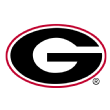 Georgia (6-0)
Georgia (6-0)
Rankings: first in the AP poll, first in SP+, first in FPI
CFP odds: 91%
Fatal flaw: They still haven't HAD to score. You know you're probably the best team in the country if your biggest flaw is "You've been beating teams too badly to have to open up your playbook very much." That said, there's still reason to wonder about the Georgia attack. For one thing, the run game is merely good, not spectacular. A quartet of Bulldogs running backs -- Zamir White, James Cook, Kendall Milton and Kenny McIntosh -- is averaging 156 rushing yards per game, but at only 5.0 yards per carry, and while the Dawgs rank a solid 17th in rushing success rate, only 10.3% of Georgia rushes have gained at least 12 yards, 59th in FBS.
The other reason for pause: While quarterback Stetson Bennett IV has been fantastic filling in for and/or usurping starter JT Daniels -- 69% completion rate, 95.2 Total QBR (first among passers with at least 50 dropbacks) and quite a few gorgeous play-action bombs -- he hasn't had to throw more than 21 passes in a game yet, and, incredibly, he's thrown only 18 passes with Georgia ahead by less than 14 points.
Bennett was perfectly solid as a fill-in last year too, but when he actually needed to make passes to keep the Dawgs even on the scoreboard, he faltered -- he was a combined 23-of-56 with four interceptions against Alabama and Florida. That Georgia has gotten this far without really needing a passing game is incredible, but we still don't know what will happen when the Dawgs actually have to complete a pass in a close game.
 Oklahoma (6-0)
Oklahoma (6-0)
Rankings: fourth in the AP poll, ninth in SP+, fourth in FPI
CFP odds: 59%
Fatal flaw: Opponents make more big plays. Lincoln Riley has got a bit of a quarterback controversy on his hands after Caleb Williams subbed in for a disheveled Spencer Rattler and led an all-time Sooners comeback against Texas in a 55-48 win on Saturday. But even with Rattler's issues, the main issue in a 55-48 win is, of course, allowing 48 points.
Texas gashed the Sooners for eight gains of 25 or more yards, and for the season Oklahoma has both generated 19 such gains (4.5% of their total plays) and allowed 19 (4.8%). OU usually wins the efficiency battle, but chunk plays are going to catch up to them at some point if the defensive glitches don't subside.
 Cincinnati (5-0)
Cincinnati (5-0)
Rankings: third in the AP poll, 13th in SP+, 10th in FPI
CFP odds: 45%
Fatal flaw: offensive funks. Like a streaky 3-point shooter, Cincinnati posts excellent offensive numbers in waves. The Bearcats rank ninth in scoring offense (41.0 points per game) and 32nd in success rate, but they also go three-and-punt 21% of the time (74th). Even in their 52-3 win over Temple, they only led 17-3 at halftime thanks to a random three-and-out and a drive that stalled and forced a long (missed) field goal. They hit the gas in the second half, as is their custom, but relying on being able to overcome an early funk can backfire in painful and obvious ways. Just ask Alabama.
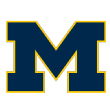 Michigan (6-0)
Michigan (6-0)
Rankings: eighth in the AP poll, eighth in SP+, fifth in FPI
CFP odds: 40%
Fatal flaw: finishing drives. The Wolverines survived a miserable third quarter to outlast Nebraska, 32-29, in Lincoln on Saturday. It was a solid win over a solid (despite its record) opponent, but it wouldn't have been nearly as much of a nail-biter had Michigan converted scoring opportunities into touchdowns. The Wolverines twice attempted field goals on fourth-and-3 in the first half (a 21-yarder and a 35-yarder), and they got pushed behind the chains twice in the fourth quarter and attempted 31- and 39-yarders.
This is a bit of a trend. Michigan's goal-to-go touchdown rate is just 77%, and their red zone TD rate is 62%. Both rank 68th in the country. With three SP+ top-20 opponents left on the slate, UM will need six-point scores to remain in the CFP conversation, not three-pointers.
 Iowa (6-0)
Iowa (6-0)
Rankings: second in the AP poll, 16th in SP+, 13th in FPI
CFP odds: 25%
Fatal flaw: dramatically inefficient offense. It's not that the Hawkeyes fall behind schedule, it's that they do so more frequently than almost any team in the country. Their 36.2% success rate (gaining at least 50% of needed yardage on first down, 70% on second or 100% on third/fourth) ranks 119th in FBS, just 0.1% ahead of Vanderbilt.
Being able to define games the way the Hawkeyes do -- with a nasty pass defense and what is probably an unsustainable propensity for forcing turnovers -- is an incredible asset. Iowa makes opponents play Iowa's game, and not the other way around. But such extreme inefficiency nearly cost them against Colorado State and probably would have against Penn State had PSU quarterback Sean Clifford not gotten hurt in the second quarter. Play with fire this much, and you'll inevitably get burned.
 Michigan State (6-0)
Michigan State (6-0)
Rankings: 10th in the AP poll, 15th in SP+, 14th in FPI
CFP odds: 9%
Fatal flaw: They'll let you pitch and catch. The Spartans' offense is exciting and explosive; the defense: less so. Despite having played only two teams that rank higher than 80th in raw QBR this season, Michigan State is allowing a 63.8% completion rate this season (94th in FBS); if you account for air yards, its adjusted completion rate allowed is 71.3% (103rd). The Spartans have played two decent passing teams (Nebraska and Western Kentucky); they needed a late punt return score to defeat the former and 48 points to defeat the latter. Even if they get to 10-0, beating Ohio State and/or Penn State late in the season will be difficult with this type of passivity.
 Coastal Carolina (6-0)
Coastal Carolina (6-0)
Rankings: 15th in the AP poll, 22nd in SP+, 24th in FPI
CFP odds: 3%
Fatal flaw: schedule strength. The Chants have won five of six games by 27-plus points thus far. They have maybe the most thrilling offense to watch in college football. But according to SP+, the average top-five team would expect to have a win percentage of 97.5% -- 11.7 wins, on average -- against Coastal's schedule. It is the weakest schedule in the country by that measure, and while I could proselytize on why it's how you play that matters more than who you play, we know that the CFP committee doesn't look at things that way. It's going to be difficult enough getting the committee to take the AAC's Cincinnati seriously despite its non-power status, and the Bearcats boast wins over Notre Dame and Indiana.
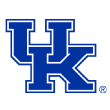 Kentucky (6-0)
Kentucky (6-0)
Rankings: 11th in the AP poll, 30th in SP+, 34th in FPI
CFP odds: 0.1%
Fatal flaw: sacks. Kentucky seemingly turned a corner on Saturday, bullying LSU for 60 minutes in a 42-21 win. They sacked quarterback Max Johnson four times in 42 pass attempts (9.5%), while UK's Will Levis was sacked only once in 18 (5.6%).
That's a change from how the rest of the season has unfolded. The Wildcats have allowed sacks on 6.1% of dropbacks (73rd in FBS) and have made them on 5.8% (56th). Each of their next three opponents ranks in the SP+ top 30 -- starting with top-ranked Georgia this coming Saturday -- and each could punish them for falling behind schedule better than Kentucky has punished its own opponents.
 Wake Forest (6-0)
Wake Forest (6-0)
Rankings: 16th in the AP poll, 48th in SP+, 35th in FPI
CFP odds: 0.1%
Fatal flaw: The defense is losing ground quickly. Wake's offense, with its disturbingly nonchalant run-or-pass reads and Sam Hartman's high-level pass efficiency, has been one of the steadiest entities in FBS, scoring between 35 and 42 points in every game thus far and rising steadily in offensive SP+. The defense, however, has fallen apart. After allowing just 14.3 points per game through four outings and slowing an explosive Virginia attack, the Demon Deacons allowed 517 yards and 34 points to Louisville (13th in offensive SP+), then 514 and 37 to Syracuse (59th). Injuries have unsettled the secondary a bit, but the biggest issues have come up front -- Louisville rushed for 208 yards, then Syracuse rushed for 354.
 Oklahoma State (5-0)
Oklahoma State (5-0)
Rankings: 12th in the AP poll, 33rd in SP+, 36th in FPI
CFP odds: <0.1%
Fatal flaw: This is not a championship offense. It's like Michigan State and Oklahoma State traded bodies at some point. Considering the reputation the Cowboys have built through the years, it's disorienting to realize how much weight the OSU defense -- a borderline top-10 unit -- has had to carry this season. The Cowboys have won five games by a combined 34 points and have yet to top 31 points in a game this season. They're averaging 5.1 yards per play (100th) with a 40% success rate (93rd). They're going three-and-punt 28% of the time (118th). The D could keep them in any remaining game, but the O will make it difficult to remain blemish-free.
One-loss teams with hope
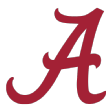 Alabama (5-1)
Alabama (5-1)
Rankings: fifth in the AP poll, third in SP+, second in FPI
CFP odds: 54%
Fatal flaw: They're just ... not quite Bama. Even after their first loss in nearly 23 months, it's hard to nitpick Nick Saban's Crimson Tide too much. There's nothing blatantly wrong here. The Tide controlled the ball against Texas A&M, outgained the Aggies by 143 yards and converted 50% of their third downs, and if they had been even in turnovers instead of -1, they'd probably have won. But the game did underscore something worth noting: Alabama is good at almost everything, but the best at nothing. They're 25th in offensive success rate and 33rd in success rate allowed. They're fifth in offensive SP+ and seventh on defense.
They have no outright weakness, but compared with last season, they're worse in almost every department. Most teams would kill to have these "problems," but we know that even if Bama reaches 11-1, the Tide will probably have to beat Georgia in the SEC championship game. Georgia is genuinely elite on defense and in the trenches. Can Bama shift from fourth to fifth gear by then?
 Ohio State (5-1)
Ohio State (5-1)
Rankings: sixth in the AP poll, second in SP+, third in FPI
CFP odds: 37%
Fatal flaw: It's still hard to trust the pass defense. It's quite possible that Ohio State has found its form after a slow start. The Buckeyes lost to Oregon and needed all 60 minutes to pull away from Tulsa but have beaten their last three opponents by a combined 177-27, averaging 9.0 yards per play and allowing 4.1. They've hopped Bama for No. 2 in SP+. They look brilliant.
They also still allowed a 71% completion rate and 514 passing yards to Rutgers and Maryland in the last two weeks. They did record six sacks and five picks, so the disruption is increasing. But three remaining opponents have QBs who currently rank in the Total QBR top 10: Penn State, Michigan State and Nebraska. Dominate those offenses, and trust levels will skyrocket.
 Pittsburgh (4-1)
Pittsburgh (4-1)
Rankings: unranked in the AP poll, 10th in SP+, 11th in FPI
CFP odds: 7%
Fatal flaw: an all-or-nothing defense. The Panthers rank sixth in explosive play rate on offense, with quarterback Kenny Pickett completing 72% of his passes at 14.3 yards per completion. On defense, they're seventh in sacks per dropback and 18th in success rate allowed. They're attacking and attacking, and it looks great on them ... except when it doesn't. They rank 121st in marginal explosiveness allowed -- my measure of the magnitude of an offense's successful plays, adjusted for field position -- which means that when they give up a good play, it's a great play.
In other words, there's a reason why every game they've played has hit the over so far. It's great for our entertainment, but probably not great for Pitt's odds of winning out.
 Notre Dame (5-1)
Notre Dame (5-1)
Rankings: 14th in the AP poll, 17th in SP+, 17th in FPI
CFP odds: 6%
Fatal flaw: the run game. Brian Kelly has been playing QB roulette of late -- three players (Jack Coan, Tyler Buchner, Drew Pyne) have thrown at least 16 passes in the last two weeks -- which could backfire at some point. But it would help if the QBs had fewer fires to put out. The Irish rank 110th in rushing success rate and 106th in standard downs success rate (first downs, second-and-7 or less, third- or fourth-and-4 or less). Star back Kyren Williams is averaging 3.9 yards per carry, and it's putting both the QB of choice and a stellar Irish defense under a lot of pressure. It will probably backfire on the Irish again at some point.
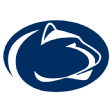 Penn State (5-1)
Penn State (5-1)
Rankings: seventh in the AP poll, sixth in SP+, 12th in FPI
CFP odds: 5%
Fatal flaw: the run game as well. It seemed heading into 2021 that Penn State would have a sturdy run game to lean on while Sean Clifford got acclimated to new coordinator Mike Yurcich's passing game. Clifford has been excellent, but the run game hasn't shown up yet. The Nittany Lions rank 96th in rushing success rate, and when Clifford was knocked out of Saturday's loss to Iowa, backup Ta'Quan Roberson's struggles were exacerbated by the fact that the ground game couldn't help him at all. Penn State running backs rushed 19 times for 46 yards, and when false starts weren't knocking PSU behind schedule, the run game was. With Clifford, the ceiling is still extremely high, but the offense is playing with one hand tied behind its back.
 Oregon (4-1)
Oregon (4-1)
Rankings: ninth in the AP poll, 39th in SP+, 15th in FPI
CFP odds: 4%
Fatal flaw: Where's the pass rush? With pass rush-friendly Tim DeRuyter taking over as defensive coordinator and inheriting pieces such as end Kayvon Thibodeaux and linebacker Noah Sewell, it was fair to assume the Ducks would get after opposing passers. Instead, they rank 105th in sacks per dropback (4.5%) and 81st in pressure rate (24.5%). As a result, opposing QBs are finding plenty of time to look downfield. That doesn't always mean success -- an exciting Oregon secondary has picked off nine passes in five games -- but it cost the Ducks in their 31-24 loss to Stanford and nearly let Ohio State back into the game in their big Week 2 win. Overall, Oregon is allowing a higher passing success rate (45.7%) than it is generating (42.5%), which makes winning trickier than it needs to be.
Technically still a chance
 Clemson (3-2)
Clemson (3-2)
Rankings: unranked in the AP poll, fifth in SP+, seventh in FPI
CFP odds: 4%
Fatal flaw: scoring points, obviously. The Tigers are basically Orange Iowa this year, ranking third in defensive SP+ and holding a No. 32 ranking in offensive SP+ that is still propped up somewhat by preseason projections. They have yet to score more than 19 points against an FBS opponent in regulation, and while there were promising signs of growth against Boston College, the growth needs to pick up quickly if they are to not only win out, but look good enough while winning out to garner attention from the CFP committee.
 Texas (4-2)
Texas (4-2)
Rankings: 25th in the AP poll, 31st in SP+, ninth in FPI
CFP odds: 3%
Fatal flaw: massive defensive inefficiency. Steve Sarkisian's Longhorns have averaged 52 points per game and 8.0 yards per play since promoting Casey Thompson to starting quarterback in Week 3. They put up 48 points at 8.5 yards per play against Oklahoma on Saturday, but they lost because, even while forcing some early mistakes from Spencer Rattler, they just couldn't make enough stops. They rank 100th in success rate allowed -- 89th against the run and 112th against the pass. If you can't knock opponents off schedule, it's really hard to win seven games in a row by large margins, as the Horns will have to do to have any hope of reaching the playoff.
